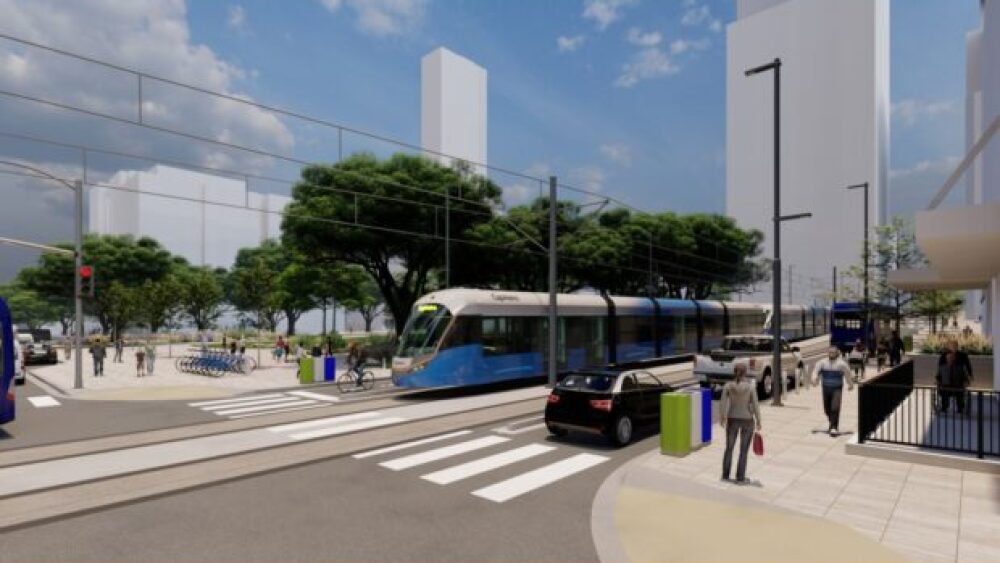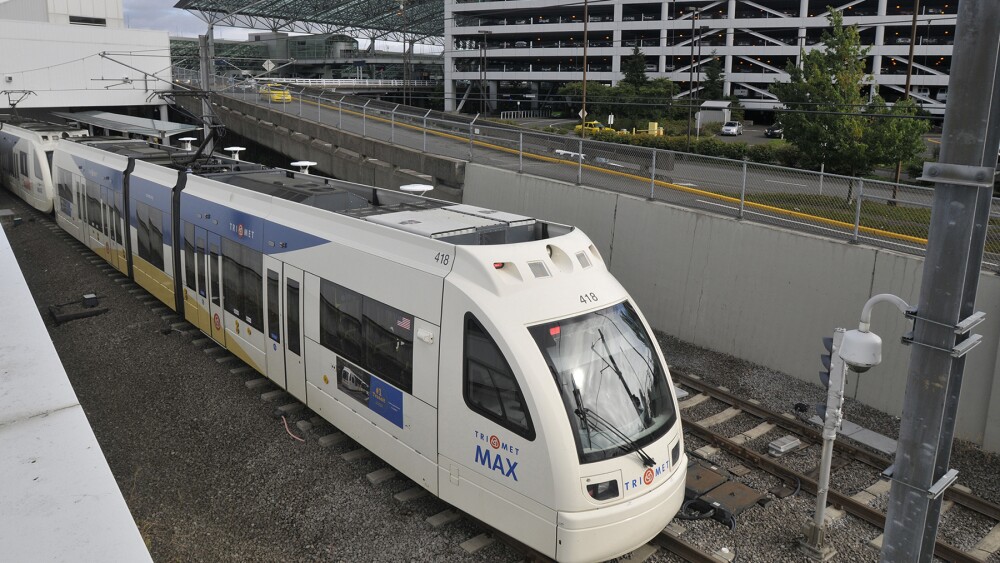Wakey wakey, eggs and bakey. It’s time for a Project Connect update.
We attended Issues & Eggs, a free, public city information and feedback session covering various subjects that took place throughout the 2000s and revived earlier this fall. This week’s meeting covered the expansive, multi-year public transit effort. Here are a few questions we can answer.
What is a light rail?
Unlike Austin’s existing Red Line, which runs on train tracks throughout the city, light rail tracks can run along existing streets, flush with the pavement. The system is entirely electric and serves stops spaced about a half-mile to a mile apart.
Why is Project Connect taking so long?
A few key efforts are simultaneously in the works during the rail’s design process: completing an environmental study, pursuing federal funding, and securing feedback to create a design that will meet the needs of the average rider.
- National Environmental Policy Act Review Process: this process is required to ensure projects do not have a “significant” impact on the environment, and takes years on average to complete.
- Securing funding from the Federal Transit Administration: applications require a competitive, well-rounded plan worthy of funding.
- Gathering feedback: this involves talking to and gathering data from real Austinites throughout the design and funding rounds.
The next few years of the process will focus on conceptual and preliminary design. Once that is completed, engineering plans will be finalized.
What factors are considered during the design process?
Aside from preserving and incorporating local ecology, officials from the Austin Transit Partnership consider:
- Mobility patterns of residents
- Existing infrastructure or lack thereof
- Safety
- Comfort levels on trains
- Connection to communities
- Proximity to work and school opportunities
- Different abilities of residents.
How does the Austin Transit Partnership collect data?
ATP collects data through designated feedback sessions, but it also interviews people of all ages, abilities, and lifestyles. ATP has also been working on studying transit habits through the use of biometric eye sensors and heart rate monitors to better understand user experience.
Which other cities and transit systems does ATP look to when designing Project Connect?
While ATP says no transit systems are perfect, the goal for Project Connect is to mimic aspects of the Paris Metro — seamlessly integrating the light rail without disrupting Austin’s culture. ATP also keeps a close eye on public transportation systems in Minneapolis, Denver, Phoenix, Seattle, Salt Lake City, and Portland.
As for vibes, Executive Vice President of Architecture and Urban Design Peter Mullan said he hopes the completed rail will “make Austin feel smaller” by making getting around town a breeze.
How can I provide feedback during the process?
If you have thoughts on the future of Austin’s public transportation, now is the time to make them heard. Here are a few ways you can voice your opinions:
- Attend one of ATP many feedback sessions. There will be seven events in December.
- Take ATP’s Designing the Transit Environment Survey, which is open until January 2024.
- Peruse the engagement library to see what other Austinites have said about the project.
Want to learn more about Project Connect? Click here.













